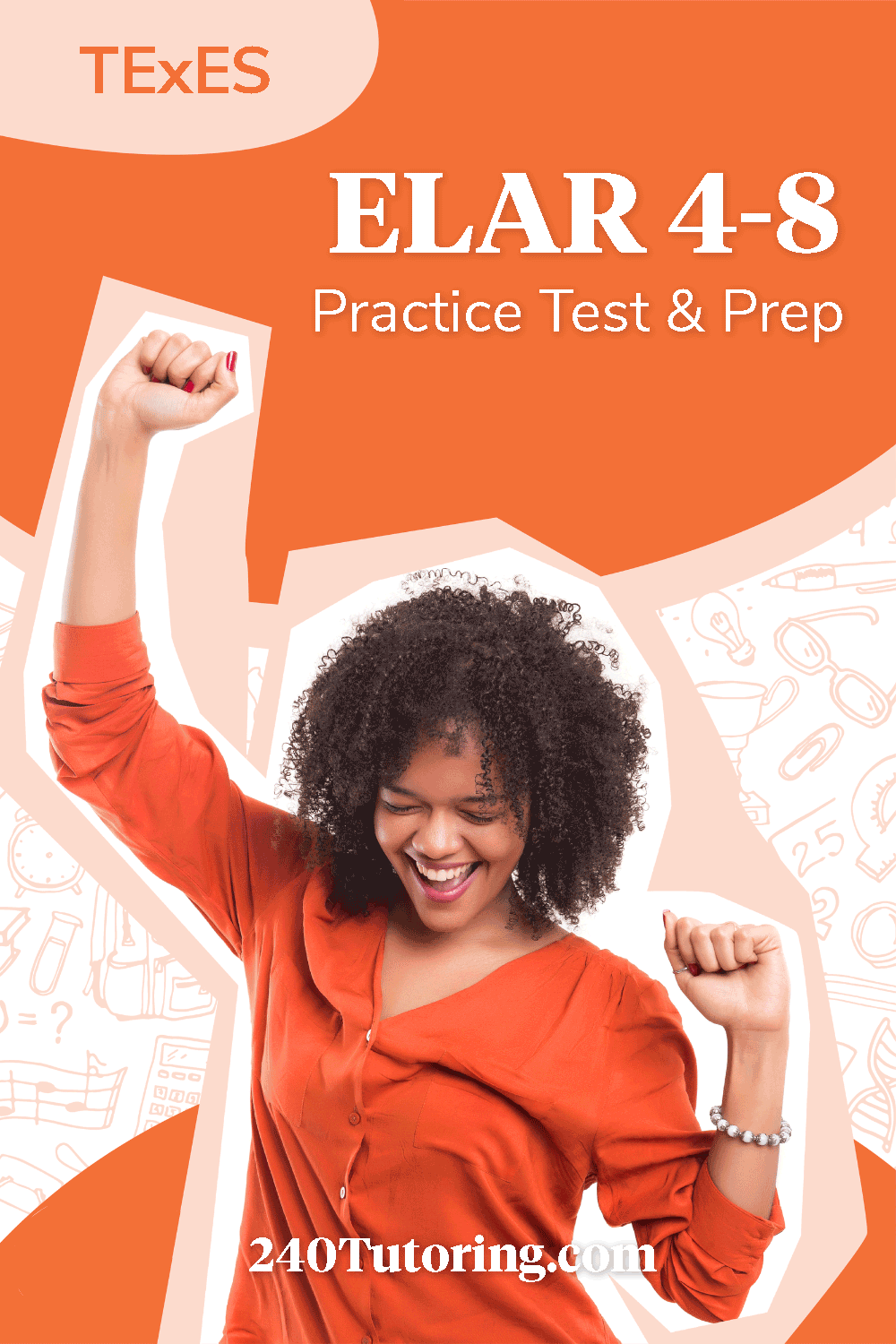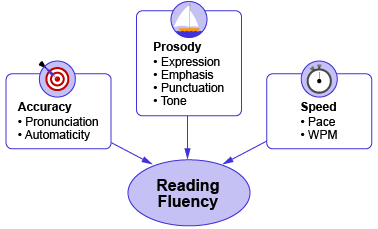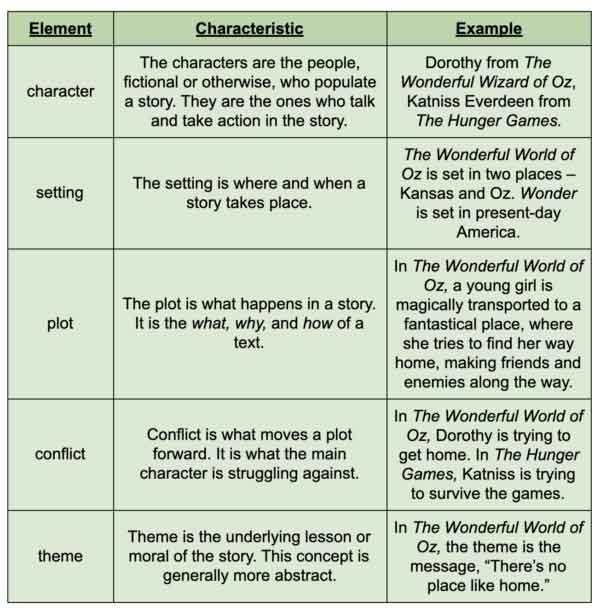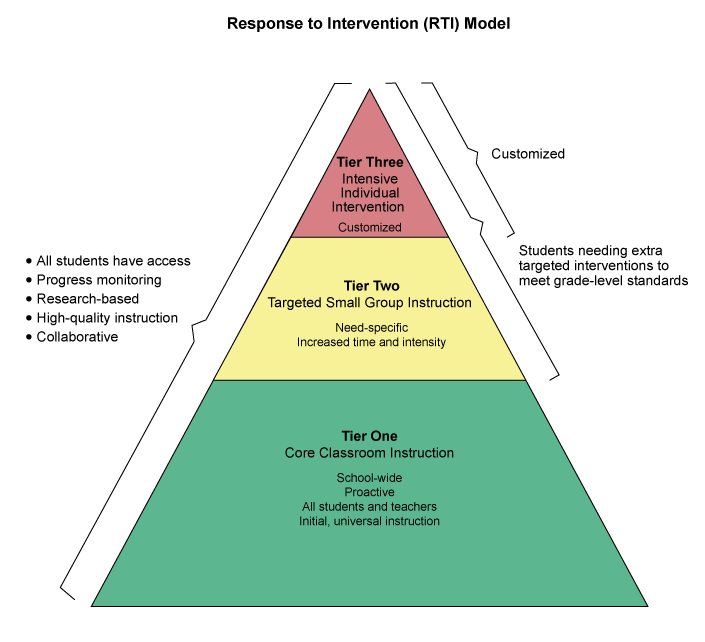
It depends on how you study! If you take our free practice tests and enroll in our study guides we are confident you will pass. In fact, we're so confident we guarantee you will pass. At the end of the free practice test you will receive a score report and your personalized, study plan-to-pass the English Language Arts and Reading 4–8. Follow this plan and you will be ready come test day!

Welcome to the TExES English Language Arts and Reading 4–8 Practice Test and Prep page. We’ll be introducing you to the core domains and concepts you need to know to pass this exam. This is one of the free resources we provide so you can see the high-level concepts you will find on the TExES English Language Arts and Reading 4–8 test to gauge how much you know.
Quick Links to Help You Navigate This Page

The TExES ELAR 4-8 (217) exam is designed to assess your knowledge and skills required to teach English Language Arts and Reading to students in fourth through eighth grade. This exam replaced the TExES ELAR (117) exam in January 2022. While several tested concepts remained the same, the 217 exam removed and added various topics and added one constructed response question. The new 217 exam also breaks down the tested competencies into five domains, while the 117 exam was broken down into two domains.
This exam consists of 90 selected-response questions and 1 constructed-response question. There are no subtests, but the exam covers information from the five domains shown below.
| Domain | Percentage of Exam |
| 1. Foundations of Reading | 27% |
| 2. Text Comprehension and Analysis | 20% |
| 3. Oral and Written Communication | 20% |
| 4. Education All Learners and Professional Practice | 13% |
| 5. Constructed Response | 20% |
For now, test takers will receive a “pass/fail” designation for this exam. This will continue for an interim period, while a minimum passing score is established. For reference, the majority of TExES exams are scored on a scale of 100-300, with a minimum passing score of 240.
Since the English Language Arts and Reading 4-8 (217) is a new exam, the passing rate is not yet known. For the old version of this exam (117), the 2016-2017 passing rate was 78%. (Source: https://www.tx.nesinc.com/content/docs/summary_statistics_for_total_scores_16-17.pdf)
Study time will vary for each individual test taker, but, a good rule of thumb for any test is to multiply the total test time by three, and then study for a bit more than that. Since the TExES ELAR 4-8 is a 5 hour exam, plan on studying 15 – 20 hours for this test. Make sure you create a study schedule that ensures you will have enough time to cover all of the material. In order to do this, start by taking our free diagnostic test. This will help you determine the areas you need to work on the most. Next, work backwards from your test date and set aside dates and times that you will spend studying specific concepts.
What TExES English Language Arts and Reading 4-8 test takers wish they would’ve known:
Information and screenshots obtained from the TExES and NES website.
Domain I accounts for 27% of the entire exam and covers competencies 1-4:
Phonological Awareness vs Phonemic Awareness
Phonological and phonemic awareness are two concepts that are frequently confused with one another, but there are important differences between the two.
Phonological awareness is the ability to recognize and manipulate different units of sound in oral language. Language can be broken down into words, syllables, onsets and rimes, and phonemes (the smallest unit of sound in a spoken language). Phonological awareness means that students can identify these different parts of language (such as counting the syllables in a word) and also manipulate them (such as changing the initial sound of a word to form a rhyming word). Phonological awareness is a crucial skill, because it helps students with decoding skills, fluency, spelling, and even sets the foundation for good reading comprehension.
Phonemic awareness is a specific component of phonological awareness. Phonemic awareness refers specifically to a student’s ability to identify and manipulate phonemes. Phonemes are the smallest unit of individual sound in a language. When assessing a student’s phonemic awareness, a teacher will often say a word or a set of phonemes aloud and ask the student to identify or manipulate the individual sounds. There are six specific phonemic awareness skills, shown in the table below with examples.

Fluency is a crucial component of reading development and is often measured by teachers to determine a student’s reading level. Reading fluency involves three important components: accuracy, prosody, and speed.

The Alphabetic Principle
The Alphabetic Principle is the idea that letters and groups of letters match the sound of spoken language. Students need to connect a letter (or a series of letters) with the sound that it makes. Learning these predictable patterns help students read with more fluency.
Children gain graphophonemic knowledge by learning that letters and letter sounds are connected to printed letters and words. Graphophonemic knowledge involves matching uppercase and lowercase letters, naming letters, recognizing letters by their sounds, understanding the alphabetic sequence of letters, and being able to list words alphabetically.
Usually (although not always), children follow this sequence of learning: letter names, letter shapes, and finally letter sounds. Educators should begin with high-frequency letters to be most effective when teaching the Alphabetic Principle. This allows students to recognize letters, sounds, and words more quickly as these letters show up more often. There is no set rate of instruction for students, and this often depends as much on the educator’s ability as on the students.
Word identification or recognition skills are integral to learning to read. They allow the reader to recognize individual words without using context clues (words in a list, for example). Initially, students will sound out words using phonics, but by gaining word identification skills, students can recognize a word as a single unit. Students can also use patterns in words to decode the sound of new words.
High Frequency Words
High-frequency words are words that appear frequently in a text. Many high frequency words are phonetically irregular, meaning that they cannot be decoded by following typical phonics patterns. While decodable words can be deciphered by blending or “sounding out” the different parts, irregular high frequency words typically have to be memorized. Instruction for irregular words differs from decodable words. Here are some examples of high-frequency and irregular high-frequency words that students might come across:
| Decodable High Frequency Words | Irregular (Non-decodable) High Frequency Words |
| like | people |
| on | been |
| must | does |
| see | said |
Tiers of Vocabulary
Students encounter a wide variety of vocabulary words in school. This vocabulary is often categorized into three tiers.
Domain II accounts for 20% of the entire exam and covers competencies 5-7:
Let’s explore some topics that you’ll likely encounter from this domain:
Role of Background Knowledge
A student’s background knowledge plays a crucial role in their reading comprehension. For example, a student who recently moved from a small town may not understand certain references used in a story that takes place in a large city. Teachers should take steps to ensure that students have the necessary background knowledge and vocabulary before reading a new text. This can be achieved using a variety of strategies including virtual field trips, direct vocabulary instruction, using photos or videos as examples, and building upon students’ current knowledge and interests.
Literary Genres
The major literary genres for fourth through eighth grade include realistic fiction, science fiction, historical fiction, folklore, fantasy, poetry, informational texts, and biographies. Each of these genres can be described or identified based on certain characteristics, as shown in the table below:

Literary Elements
A story has five important elements: characters, setting, plot, conflict and theme, as shown in the table below.

Fact vs Opinion
A fact is a statement or piece of information that can be proven. An opinion is an expression of a person’s feelings that cannot be proven. An opinion expresses what someone thinks or how someone feels about a topic and cannot be proven. For example, “It is raining” is a fact. “Rainy days are the best days” is an opinion.
Students should be taught skills and strategies for recognizing facts and opinions. One strategy for distinguishing facts from opinions is using signal words or keywords. Factual statements typically do not include signal words, but opinion statements often do. Examples of common signal words for opinion statements include:
Literary Elements
Authors use literary elements to enhance the experience and connection that a reader has with the text. These are also sometimes referred to as literary devices. The following are common literary elements taught and encountered in grades 4-8.
| Literary Element | Definition | Example |
| Imagery | The use of highly descriptive language to create a mental image for the reader. | The sunset painted a purple glow on the lake as the fireflies danced among the trees. |
| Simile | Compares one thing to another, typically by using the words “like” or “as” | Her hair was as golden as the sun. |
| Metaphor | Compares two unlike things stating that one thing is the other. | The snow was a blanket covering the field. |
| Hyperbole | An extreme exaggeration used for effect | The man walked slower than a turtle. |
| Personification | Applies human characteristics to a nonhuman object | The siren screamed into the night. |
| Alliteration | The repetition of the same letter or sound at the beginning of a series of words to create a lyrical or poetic effect | The happy hippo hopped across the hill. |
Informational Text Features
Informational text features are used to help a reader navigate and understand a nonfiction text. Some of the most common informational text features are described below.
Domain III accounts for 20% of the entire exam and covers competencies 8-10:
Let’s take a closer look at some specific topics from these competencies.
Stages of Writing Development
Children move through common stages of writing development. While most fourth – eighth graders will likely be in the final two stages of development, it is important to know all five stages. Let’s take a look at some of the characteristics of each stage:
Using Text Organizers
A text organizer is used to help students understand the different structures of texts they read. Some of these structures are cause-and-effect, compare-contrast, and problem-solution. An organizer is a specific graphic tool that helps students see the structure of the text they’re analyzing. Organizers can include sequential maps, tiered maps (like a pyramid), or mind maps.
Here is an example of a sequential text organizer for the book Alice in Wonderland.

Evaluating the Reliability of a Source
It is important to confirm the reliability of a source to make sure the information conveyed is accurate and up-to-date. Educators should take special care to teach their students how to critically examine the sources and information they find, particularly information found online. Educators need to remind students that, in many instances, anyone can post information on the internet.
To help students evaluate the reliability of the source, teachers should encourage their students to ask themselves the following questions:
Active Listening
Active listening means making a conscious effort to hear the words that someone is saying and understand the complete message being communicated. Active listening is an important skill for students to develop. Teachers can promote active listening skills by noting and praising students who are actively listening, modeling what active listening looks like, having students role play active listening, and teaching students specific expectations, such as the ones listed below.
Domain IV accounts for 13% of the entire exam and covers competencies 11-13:
Universal Design for Learning
Universal Design for Learning, or UDL, is a framework for teaching and learning that is based on scientific research on how humans learn. Teachers who follow UDL principles focus on providing flexibility and choice in how students learn and how they demonstrate their knowledge. In a UDL classroom, there is always a clear goal and flexible options. All students rarely do the same task in the same way at the same time. The UDL framework is centered around three guiding principles, each described below.
Communication with Families
Communication with students’ families should occur on a regular basis, with the goal of keeping parents informed of their child’s learning. Communication should be done through a variety of channels, depending on specific scenarios.
| Form of Communication | Best Used For: |
| General class updates, reminders, positive comments, minor concerns | |
| Written notes | Brief daily communication records, often in a daily folder taken to and from school |
| Newsletters | Sharing information about concepts being taught in class, important dates |
| Phone calls | Brief conversations, time sensitive information, or for conferences when a face-to-face conference is not feasible. |
| Conferences | Discussing a child’s progress and/or specific academic, behavior, or social concerns |
| Electronic portals | Sharing a child’s grades and assessment results |
| Communication apps | General class updates, sharing photos of students, positive communication, reminders |
Response To Intervention
RTI stands for Response to Intervention. It is a process used by educators to identify and support students’ academic and/or behavioral needs. Using the RTI model, students receive varying degrees of academic or behavioral support. This support is referred to in terms of tiers, with tier three being the most intensive.
The RTI process should be ongoing and flexible. Teachers should continuously monitor student progress and make adjustments as needed. For example, a student may need Tier 2 support for a time, then successfully return to Tier 1.

Culturally Responsive Teaching
Culturally responsive teaching is an approach to teaching that focuses on making teacher-student connections by recognizing the importance of each student’s background. In an English Language Arts and Reading classroom, this includes choosing lessons and texts that acknowledge and respect all students.
When selecting books for the classroom or for lesson plans, it is important that teachers consider diversity, cultural sensitivity, and appropriateness of the text. Books used in the classroom should reflect the various interests and backgrounds of the students and should include characters of different races, nationalities, backgrounds, cultures, and family structures. It is also important that the teacher evaluate the sensitivity and appropriateness of the texts used in their classroom by examining the topics covered in the text and by looking closely at how a group or character is portrayed.
Formal and Informal Assessments
Teachers should use a combination of formal and informal assessment methods when evaluating students’ understanding.
Formal assessments are data-driven, and the results are usually rated against some sort of standard. Scores like percentiles, standard scores, or stanines are given for these assessments. Criterion-referenced state tests and norm-referenced tests are examples of formal assessments.
Informal assessments are content or performance-driven. In other words, graders will evaluate a student’s performance during a learning period. This evaluation can include interviews, observational measures, informal reading inventories, performance-based grades, and curriculum-based reading assessments. Exit tickets, anecdotal records, and short quizzes are all examples of informal assessments.
Domain V consists of 1 constructed response question and accounts for approximately 20% of the entire exam.
For the construction response question, you will be given a specific fictional scenario, presented in the form of various “exhibits.” These exhibits will typically be a combination of learning objectives from a lesson, lesson materials (such as a reading passage), sample assignments, student work samples, assessment results, or excerpts of conversations between a teacher and student.
The constructed response prompt will typically include five specific components that need to be addressed. You will analyze the exhibits and then write a 400-600 word response that addresses all parts of the prompt.
Constructed response questions are graded on a scale of 1 to 4 based the following criteria: